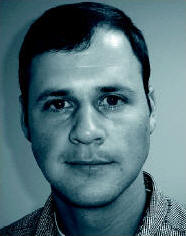|
The
NATA
Research
and
Education
Foundation
Scholarship
Program
offers
up to
70-
$2,000
awards
in three
categories
(undergraduate,
masters
and
doctoral).
The
basic
criteria
includes
students
having a
3.2 GPA
and
intent
to make
athletic
training
their
primary
means of
livelihood.
However,
each
category
has
slightly
different
requirements.
To
download
applications
or for
more
information
access
www.natafoundation.org
and link
to the
scholarship
program.
The
final
date of
application
for
2006-07
awards
is Feb.
10,
2006.
If you
have any
qualified
students,
I urge
you to
remind
them to
apply.
Should
you have
any
specific
questions
or need
additional
information,
don't
hesitate
to
contact
me
directly.
Yours in
Athletic
Training,
Ken
Kladnik
M.Ed.,
ATC
Chairman-NATA
Foundation
Scholarship
Committee |
|
|
PRACTICAL
SIGNIFICANCE
Self-report
concussion
symptom
scales
can
provide
reliable
and
valid
baseline
assessment
of a
sportrelated
concussion.
However,
clinicians
should
be aware
that
fatigue
state,
physical,
or
orthopaedic
ailments
may
potentially
impact
the
usefulness
of the
baseline
measurements.
STUDY
BACKGROUND
No
consistent
format
or
administration
instructions
are
provided
for the
appropriate
use of a
summative
self-report
symptom
scale
for
concussions.
Also,
limited
scientific
information
explaining
the
psychometric
development
and
validity
of such
a scale
is
available.
These
issues
have
lead to
confusion
among
sports
medicine
clinicians
and
could
lead to
making
incorrect
return
to play
decisions.
These
issues
were
addressed
by
examining
responses
to two
common
forms of
summative
self-report
symptoms
scales:
the Head
Injury
Scale
(HIS)
and a
symptom
severity
scale
based
upon the
Post
Concussion
Symptom
Scale (PCSS)
and
Graded
Symptom
Checklist
(GSC).
OBJECTIVE
Evaluate
factorial
validity
of
baseline
responses
to
9-item
Head
Injury
Scale
(HIS)
and a
severity
scale
developed
from the
PCSS and
GSC.
Investigate
influence
of
pre-existing
conditions
upon
baseline
self-report
symptoms
(SRS)
responses
to each
scale.
DESIGN
AND
SETTING
A
quasi-experimental
design
employing
a
pre-test
and
post-test
was
employed
to
compare
responses
to each
scale
between
concussed
and
nonconcussed
groups.
Subjects
were
surveyed
in an
athletic
training
room
environment.
SUBJECTS
Participants
(female
n = 260,
male n =
805)
were
college
athletes
(age
=19.81 ±
1.53)
from 8
NCAA
institutions.
The
experimental
analyses
comprised
concussed
(n = 17)
and
non-concussed
(n=10)
college
athletes.
Two day
test-retest
reliability
was
conducted
with a
sample
of
healthy
college
students
(n =83,
age =
19.92 ±
1.62).
MEASUREMENTS
Baseline
measures
for two
SRS
scales
and a
health
questionnaire
were
obtained.
Experimental
analysis
was
performed
on
baseline
and days
1, 2, 3,
and 10
post-injury.
RESULTS
Responses
to the
SRS
scales
(HIS,
severity)
were
reliable
.85, and
.84
(respectively),
stability
reliability
r =.85,
and r
=.86
(respectively)]
and
factorialy
valid
according
to
accepted
values
found in
the CFA
literature.
No sex
effects
for
baseline
responses
were
observed
(P
>.01).
Previous
history
of
concussion
resulted
in
higher
composite
scores
on both
SRS
scales
(P
<.01).
Composite
scores
were
also
elevated
for
those
reporting
daily
fatigue,
physical
illness,
and / or
orthopedic
injury
(P
<.01). A
significant
groups
by days
interaction
[F(4,
20)
=4.93,
P=.006]
was
found
with
composite
HIS
scores.
Responses
to the
severity
scale
also
demonstrated
significant
groups
by day
interaction
[F (4,
20)
=3.93,
P=.015].
Statistical
differences
between
groups
were
observed
for both
scales
on days
1 and 2
post-concussion
(P <.05)
but no
statistically
significant
differences
were
demonstrated
for
either
scale on
days 3
and 10.
CONCLUSIONS
This
study
confirmed
previous
findings
by
providing
evidence
for the
reliability,
factorial
and
construct
validity
of the
HIS
among
collegiate
athletes.
The SRS
scales
can be
sensitive
to the
effects
of
concussion
and may
provide
clinicians
with
additional
information
from
which to
base
return
to play
decisions.
However,
our data
suggest
that
baseline
responses
to SRS
scales
can be
influenced
by a
previous
history
of
concussion
and
factors
such as:
daily
fatigue,
physical
illness,
and
orthopedic
injury.
Thus,
clinicians
should
consider
these
factors
prior to
obtaining
baselines
of
self-report
symptoms.
Publication
and
Presentation
List:
-
Piland
SG,
Ferrara
MS.
“Baseline
Symptomatology”
NATA
Annual
Meeting
and
Clinical
Symposium,
Baltimore,
MD,
2004.
-
Piland
SG,
Ferrara
MS,
Gould
TE,
Broglio
SP.
Fatigue
as
an
indicator
of
inflated
baseline
symptom
reports.
Journal
of
Athletic
Training.
2005
(suppl);40:S15.
|

Scott G. Piland, PhD, ATC
Principal Investigator
|
Scott completed his Doctor of Philosophy degree in Exercise Science from the University of Georgia. He is now serving as an Assistant Professor and ATEP Clinical Coordinator with The University of Southern Mississippi School of Human Performance and Recreation.
Scott G. Piland, PhD, ATC
The University of Southern Mississippi
School of Human Performance and Recreation
118 College Drive #5142
Hattiesburg, MS 39406-0001 |
|
|